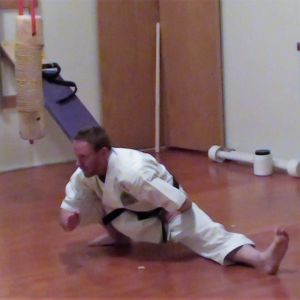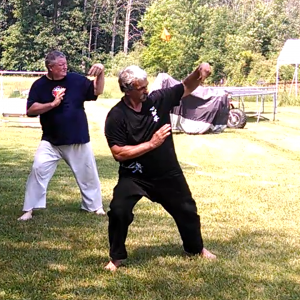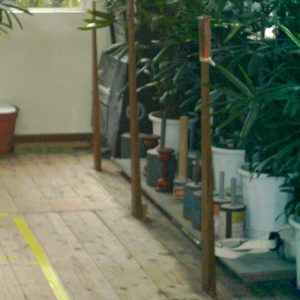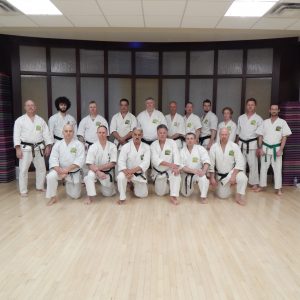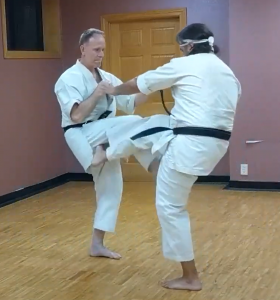Training
Training requires a little planning by students in order to optimize their time in the dojo. The dojo is leased from a health club and used by other groups when not reserved for karate classes. Locker rooms are available and the dojo is an open space with wood floors and mirrors as well as storage for training tools. The only items lacking are mounted equipment.
A true “dojo” is defined by the intent practitioners bring when bowing in at the door. Following the Dojo Kun (rules) helps students reinforce the atmosphere of a traditional dojo. Most classes follow a standard format with some variations.
A true “dojo” is defined by the intent practitioners bring when bowing in at the door. Following the Dojo Kun (rules) helps students reinforce the atmosphere of a traditional dojo. Most classes follow a standard format with some variations.
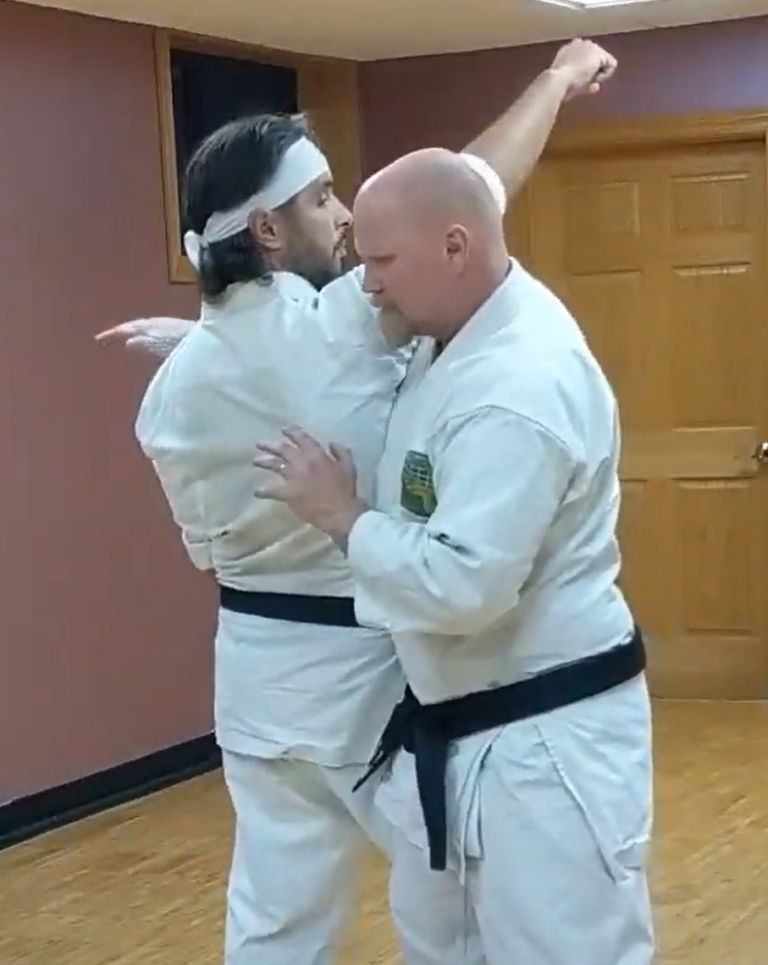
Class Format
Clean the Dojo
Yobi Undo – Preparative Exercises
Kata Practice
Partner Training
Kigu Undo – Training with Equipment
Seri Undo – Cool Downs

